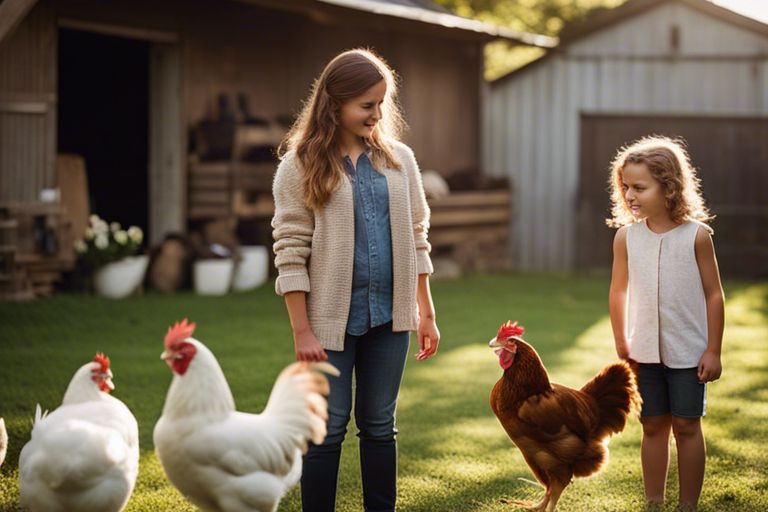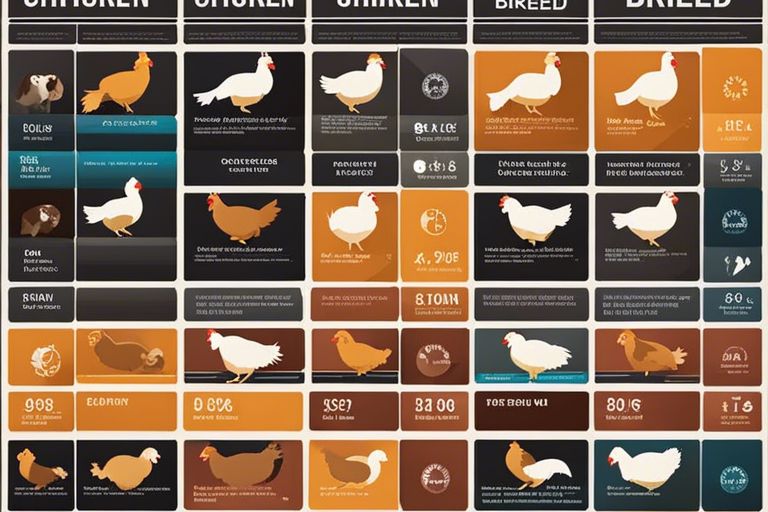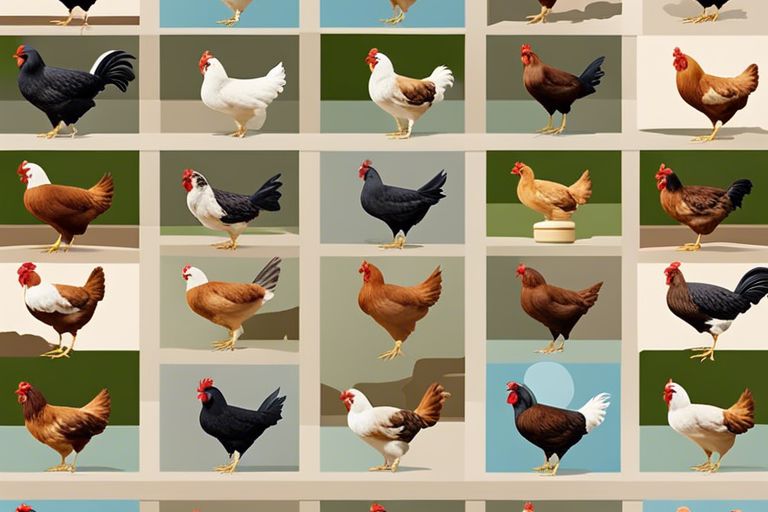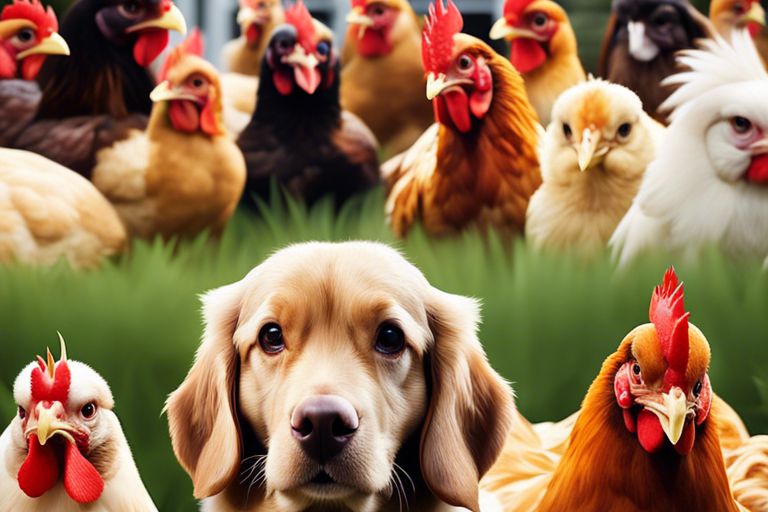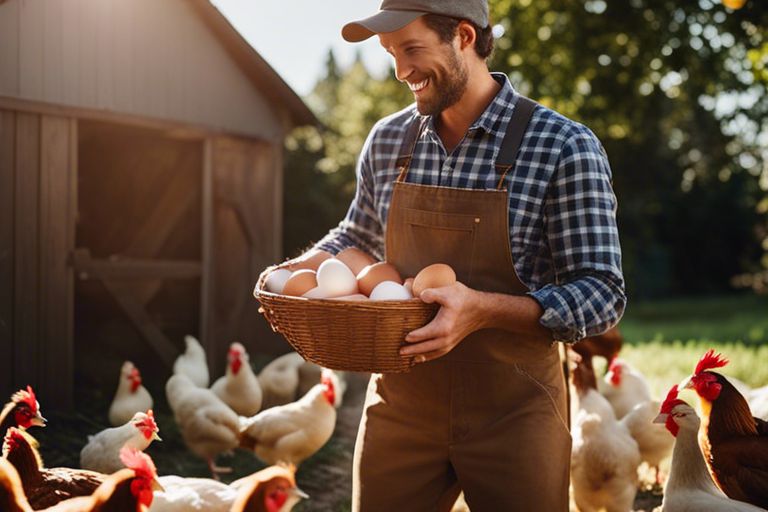Most chicken keepers who raise poultry for both eggs and meat often opt for dual-purpose chicken breeds. These breeds are known for their ability to lay a good number of eggs while also producing decent quality meat. In this blog post, we will explore the benefits of raising dual-purpose chickens, the most popular breeds to consider, and some important tips for success in managing these versatile birds.

Selecting the Right Breed
Characteristics of Dual-Purpose Chickens
Dual-purpose chickens are breeds that excel in both egg production and meat quality. These breeds are typically large, hardy birds that lay a respectable number of eggs while also yielding good meat when they reach maturity. They are known for their versatility and ability to thrive in various climates and conditions, making them a popular choice for homesteaders and small-scale farmers.
Popular Dual-Purpose Chicken Breeds
Selecting the right dual-purpose chicken breed is important to ensure a successful outcome. Some of the most popular dual-purpose breeds include Rhode Island Reds, Plymouth Rocks, Orpingtons, and Sussex. These breeds are known for their reliable egg-laying capabilities and flavorful meat. They are also docile and easy to manage, making them suitable for beginners and experienced poultry keepers alike.
It’s important to consider factors such as climate, space availability, and your specific goals when choosing a dual-purpose chicken breed. Researching the characteristics and requirements of different breeds can help you make an informed decision that aligns with your needs and preferences.
Managing a Dual-Purpose Flock
Housing and Environment
An necessary aspect of managing a dual-purpose flock is providing suitable housing and environment for your chickens. Ensure your coop is spacious enough to accommodate both egg-laying and meat-producing chickens comfortably. Keep the coop clean, well-ventilated, and free from drafts to promote good health and productivity.
Feeding and Nutrition
Environment is a key factor in the successful management of a dual-purpose flock. Provide a balanced diet rich in protein, vitamins, and minerals to support the growth and development of your chickens. Consider including a mix of commercial feed, grains, greens, and kitchen scraps to ensure a well-rounded nutritional intake for your flock.
Plus, make sure your chickens have access to clean water at all times to prevent dehydration and support overall health and egg production.
Health and Wellness
With a dual-purpose flock, it is crucial to prioritize the health and wellness of your chickens. Regularly inspect your flock for signs of illness, injury, or stress. Consult with a poultry veterinarian for advice on vaccination schedules, parasite control, and general health maintenance practices to keep your chickens thriving.
This comprehensive approach to managing a dual-purpose flock will help you raise healthy and productive chickens that provide both eggs and meat for your homestead.

Maximizing Egg Production
Breeding for Egg-Laying Traits
Production of eggs in your dual-purpose chicken flock begins with strategic breeding for egg-laying traits. Selecting hens and roosters that come from lines known for high egg production can help ensure that your offspring will be prolific layers. Look for breeds that have been specifically bred for their egg-laying abilities, such as Rhode Island Reds, Leghorns, or Australorps. By focusing on breeding for these traits, you can maximize the overall productivity of your flock.
Egg Collection and Handling
The key to maximizing egg production is ensuring that the eggs are collected and handled properly. The moment an egg is laid, it should be promptly collected from the nest boxes to prevent any potential breakage or contamination. Regular collection also encourages hens to continue laying on schedule, maintaining a consistent egg production rate. Make sure to clean the eggs if necessary, store them in a cool and dry place, and always handle them gently to avoid damage.
Plus, incorporating proper lighting, nutrition, and environmental conditions can also help boost egg production in your dual-purpose chicken flock. By paying close attention to these factors and implementing best practices for breeding and handling, you can optimize egg production and enjoy a bountiful supply of fresh eggs for your household.
Processing for Meat
Age and Weight Considerations
Considerations for processing dual-purpose chicken breeds for meat include the age and weight of the birds. It is recommended to process chickens for meat between 14-20 weeks of age when they reach an ideal weight of 4-7 pounds. Younger birds are more tender, while older birds may have tougher meat.
Humane Slaughter and Processing Techniques
Slaughter and processing of chickens should be done in a humane manner to ensure minimal stress and pain for the birds. Techniques such as stunning or controlled atmosphere killing are recommended to minimize suffering. Proper training in humane slaughter techniques is vital to ensure the birds are processed in a respectful and ethical manner.
It is also important to have good sanitation practices during processing to prevent contamination and ensure the meat is safe for consumption. Processing should be done in a clean and organized environment, with tools and equipment properly sterilized between birds to prevent the spread of bacteria.
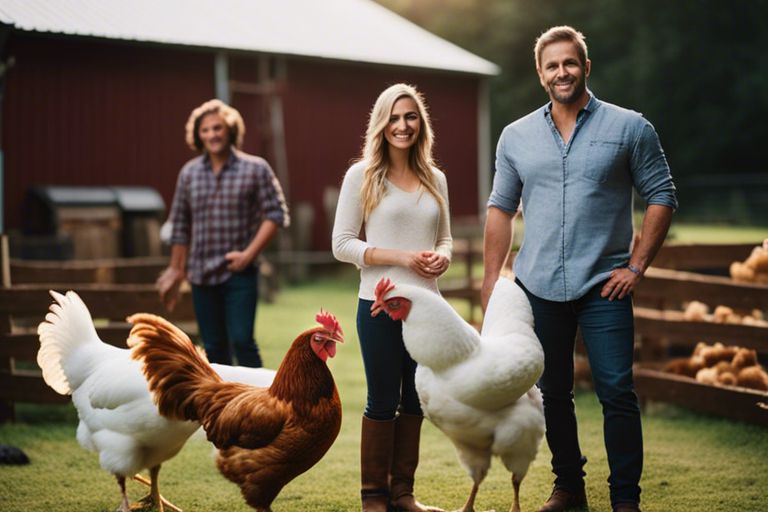
Marketing and Economics
Selling Eggs and Meat Locally
Many small-scale poultry farmers choose to sell their eggs and meat locally to take advantage of the demand for fresh, high-quality products. To market your dual-purpose chicken breeds effectively, consider setting up a small roadside stand, selling at local farmers’ markets, or establishing relationships with local restaurants and grocery stores. Highlight the superior taste and nutritional value of your products to attract customers looking for an alternative to mass-produced chicken.
Cost Analysis and Profitability
For those considering raising dual-purpose chicken breeds for eggs and meat, a thorough cost analysis is imperative to ensure a profitable venture. Factor in costs such as feed, housing, equipment, and veterinary care, as well as your time and labor. Consider the selling price of your eggs and meat in your local market to determine your potential profitability.
Profitability is influenced by various factors, including feed costs, market demand, and your production efficiency. By carefully monitoring your expenses and adjusting your prices accordingly, you can ensure that your dual-purpose chicken operation is sustainable and financially rewarding in the long run.
To wrap up
Considering all points discussed, raising dual-purpose chicken breeds for eggs and meat can be a sustainable and cost-effective option for small-scale farmers and homesteaders. By selecting breeds that are known for their proficiency in both egg-laying and meat production, farmers can maximize the productivity of their flock without the need for separate populations of birds. Proper management practices, such as balanced nutrition, adequate housing, and regular health check-ups, are imperative for ensuring the well-being and productivity of dual-purpose chickens. With careful planning and attention to detail, farmers can enjoy a steady supply of fresh eggs and high-quality meat from their dual-purpose chicken breeds.
FAQ
Q: What are dual-purpose chicken breeds?
A: Dual-purpose chicken breeds are breeds of chickens that are specifically bred to be productive both in terms of laying eggs and providing meat.
Q: What are some popular dual-purpose chicken breeds?
A: Some popular dual-purpose chicken breeds include Rhode Island Red, Plymouth Rock, Sussex, Wyandotte, and Orpington.
Q: How do you raise dual-purpose chicken breeds for eggs and meat?
A: To raise dual-purpose chicken breeds for both eggs and meat, provide a balanced diet rich in protein, ensure access to clean water, provide adequate space for exercise, and maintain proper coop hygiene.
Q: How do you ensure dual-purpose chickens are healthy and productive?
A: To ensure your dual-purpose chickens are healthy and productive, monitor their nutrition, keep their living environment clean, provide regular veterinary care, and practice biosecurity measures to prevent disease.
Q: At what age do dual-purpose chickens start laying eggs?
A: Dual-purpose chickens typically start laying eggs around 5-6 months of age, depending on the breed and environmental conditions.
Q: How long do dual-purpose chickens continue laying eggs?
A: Dual-purpose chickens can continue laying eggs for 3-4 years, with peak production usually occurring in the first 2 years.
Q: When is the best time to process dual-purpose chickens for meat?
A: The best time to process dual-purpose chickens for meat is typically between 14-20 weeks of age, when they have reached a good size for optimal meat yield.
